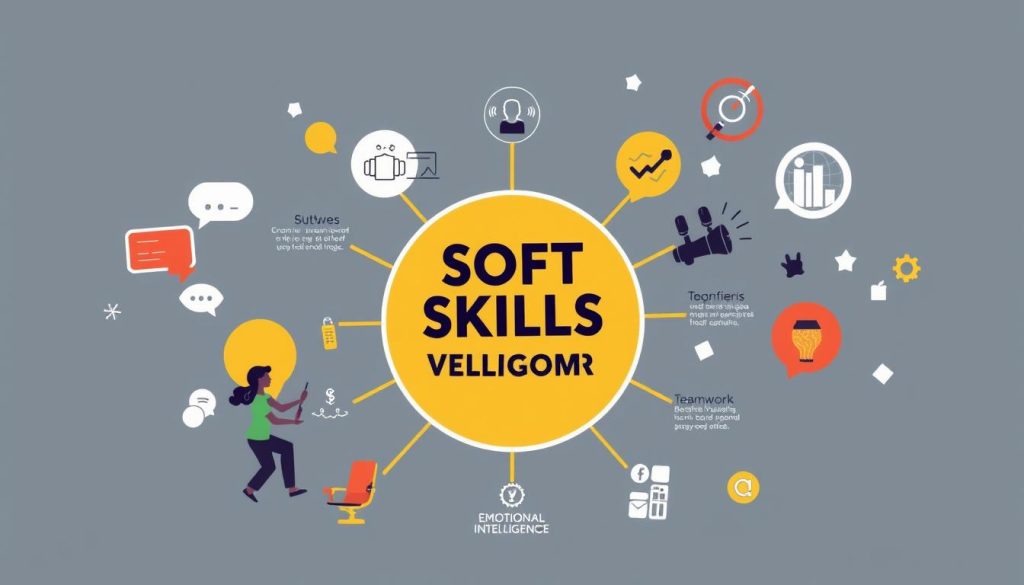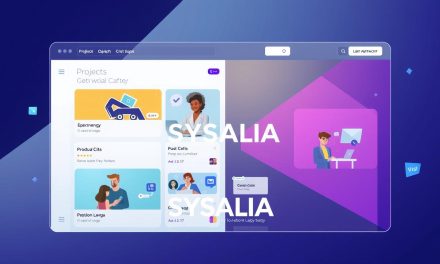In today’s rapidly evolving professional landscape, career stability is a top priority for independent professionals.
To stay competitive in the job market, it’s essential to continually develop new skills and refine existing ones, a process known as skill enhancement.
This guide will walk you through the importance of learning and development in achieving long-term career security.
By the end of this article, you’ll have a clear understanding of how to create a personalized plan for skill enhancement, ensuring your continued success.
Table of Contents
Key Takeaways
- Understand the importance of continuous learning in career stability
- Identify key skills required in the current job market
- Develop a personalized plan for skill development
- Learn how to stay competitive in a rapidly evolving professional landscape
- Discover strategies for achieving long-term career security
Understanding Skill Enhancement in Today’s Professional Landscape
The contemporary professional landscape is characterized by a constant need for skill enhancement to remain competitive. As industries continue to evolve, professionals must adapt by acquiring new skills and refining existing ones.
Skill enhancement is a structured process designed to help employees become more autonomous and effective. It involves a systematic approach to identifying, acquiring, and refining competencies that contribute to professional growth.
What is Skill Enhancement?
Skill enhancement represents a deliberate approach to expanding professional capabilities beyond basic competencies. It encompasses both hard technical skills and soft interpersonal skills. Effective skill enhancement requires applying knowledge in practical contexts to develop true competency.
Why Skill Enhancement is Essential for Career Stability
As industries evolve, the need for skill enhancement becomes increasingly vital for professionals seeking stability. In a landscape where technological advancements and market shifts are constant, the ability to adapt and grow professionally is paramount.
Career Advancement and Higher Earning Potential
Enhancing your skills not only makes you a more attractive candidate for higher-level positions but also facilitates career progression, enabling you to negotiate better salaries. Professionals with diverse skill sets command higher earning potential, as specialized and in-demand competencies often justify premium compensation packages.
Adaptability in a Rapidly Changing Job Market
The rapidly changing job market requires adaptability that can only be achieved through proactive skill enhancement and staying ahead of industry trends. Continually upgrading your skills helps you stay relevant and resilient in the face of industry changes, ensuring you remain competitive.
Job Security Through Diverse Competencies
A diverse skill set makes it easier to transition between roles or industries, providing a buffer against unemployment. Research consistently shows that professionals who regularly update their skills experience significantly greater job security during economic downturns and industry disruptions, fostering resilience in their careers.
For more insights on navigating career changes, consider exploring resources on professional reconversion, which can provide valuable guidance on transitioning to new career paths.
Assessing Your Current Skill Set
A thorough assessment of your skills is necessary for effective career planning. This process involves evaluating your current competencies to identify areas for improvement and development.
Conducting a Personal Skills Audit
To conduct a personal skills audit, start by categorizing your skills into technical competencies, soft skills, industry knowledge, and transferable abilities. Utilize professional assessment tools and frameworks to objectively evaluate your proficiency levels across different skill categories.
- Categorize your skills into technical competencies, soft skills, industry knowledge, and transferable abilities.
- Use assessment tools to evaluate your proficiency levels.
Identifying Skill Gaps in Your Professional Profile
Identifying skill gaps involves analyzing job descriptions for roles you aspire to and comparing requirements against your current capabilities. Seek feedback from managers, colleagues, and mentors to gain external perspectives on your strengths and areas for development.
| Skill Category | Current Proficiency | Required Proficiency |
|---|---|---|
| Technical Skills | Intermediate | Advanced |
| Soft Skills | Advanced | Expert |
| Industry Knowledge | Basic | Intermediate |
Types of Skills Worth Enhancing for Long-term Career Success
As the job market continues to evolve, the importance of skill enhancement for career longevity cannot be overstated. To stay relevant and competitive, professionals must identify and develop a diverse range of skills that align with industry demands and technological advancements.
Technical Skills for Your Industry
Technical skills specific to your industry are foundational to career success. Regular updates are necessary as technologies and methodologies evolve. Examples include proficiency in software applications, digital tools like Photoshop, advanced data analysis, and programming languages.

Soft Skills and Interpersonal Competencies
Soft skills, including interpersonal communication, teamwork, and leadership abilities, are equally crucial. Skills like team leading, public speaking, and conflict resolution are highly valued in management roles and contribute to a well-rounded professional profile.

Digital Literacy and Technological Adaptability
Digital literacy has become a core requirement across industries, with proficiency in data analysis and digital tools being essential. Staying adaptable to technological changes is vital for career stability.

Leadership and Management Capabilities
Leadership and management skills provide significant value, demonstrating potential for advancement and the ability to drive team success. Developing these capabilities can significantly enhance career prospects.

By focusing on these key areas—technical skills, soft skills, digital literacy, and leadership capabilities—professionals can develop a diverse skill set that enhances their career stability and opens up new opportunities for advancement.
Different Approaches to Skill Enhancement

To stay competitive, professionals must adopt various approaches to skill enhancement. The ever-evolving job market demands continuous learning and adaptation to new technologies and methodologies. There are three primary strategies for enhancing your skills: upskilling, reskilling, and cross-skilling.
Upskilling: Perfecting Existing Competencies
Upskilling involves deepening and perfecting your existing skills to achieve mastery and improved performance in your current professional domain. This approach is particularly valuable when your career path remains stable but requires increasingly sophisticated expertise to advance. By focusing on upskilling, you can stay relevant and competitive in your field.
Reskilling: Learning New Professional Skills
Reskilling involves acquiring entirely new skills, often in response to significant industry shifts or personal career pivots. This approach has gained prominence as technological disruption renders some roles obsolete while creating demand for entirely new skill sets. Reskilling is an opportunity to make a career change and move up the career ladder.
Cross-skilling: Broadening Your Expertise
Cross-skilling emphasizes broadening your expertise across related domains, creating a diverse skill set that enhances versatility and adaptability. This approach allows professionals to adapt quickly to new tasks and challenges, limiting risks in the event of rapid changes in their activity.
| Approach | Description | Benefit |
|---|---|---|
| Upskilling | Perfecting existing competencies | Improved performance in current role |
| Reskilling | Acquiring new professional skills | Career change and advancement opportunities |
| Cross-skilling | Broadening expertise across related domains | Enhanced versatility and adaptability |
Each approach to skill enhancement serves different career objectives and should be selected based on your specific professional circumstances and goals. Many successful professionals implement a blended strategy that combines elements of upskilling, reskilling, and cross-skilling to maximize career stability.
Creating Your Personalized Skill Enhancement Plan
A well-structured skill enhancement plan is the backbone of any successful career development strategy. It serves as a roadmap, guiding you through the process of acquiring new skills and enhancing existing ones.
Setting SMART Goals for Skill Development
Setting clear and achievable goals is the foundation of any effective skill enhancement plan. Utilize the SMART method to ensure your goals are Specific, Measurable, Attainable, Relevant, and Time-bound. For instance, instead of saying, « I want to improve my public speaking, » a SMART goal would be, « I will attend a public speaking workshop and give at least one presentation each month for the next six months. »
Choosing the Right Learning Methods and Resources
Selecting appropriate learning methods requires understanding your personal learning preferences and the nature of the skills you’re developing. Consider a blend of formal education, self-directed learning, mentorship, and practical application when choosing resources for your skill enhancement plan. You can find more information on effective strategies at https://blog.simulateur-portage-salarial.fr/strategies-de-reussite-votre-chemin-vers-le-succes/.
Establishing a Realistic Timeline and Milestones
Establishing a realistic timeline with specific milestones helps maintain momentum and provides opportunities to celebrate progress throughout your learning journey. Your plan should include strategies for overcoming potential obstacles and maintaining consistency during busy periods or professional challenges.
| Skill Enhancement Activity | Timeline | Milestones |
|---|---|---|
| Attend public speaking workshop | Month 1 | Complete workshop |
| Give presentations | Months 2-6 | At least one presentation per month |
| Evaluate progress | Month 6 | Assess presentation skills improvement |
Implementing Your Skill Enhancement Strategy

The key to successful career development lies in effectively implementing your skill enhancement strategy. This involves a combination of planning, execution, and continuous assessment to ensure that your skills remain relevant and competitive in the job market.
Balancing Skill Development with Professional Responsibilities
Successful implementation requires finding a sustainable balance between skill development activities and existing professional responsibilities. Create a realistic schedule that allocates specific time blocks for skill development while respecting your energy levels and existing commitments.
- Identify your most productive times of the day for learning.
- Allocate dedicated time slots for skill development in your calendar.
- Leverage your workplace learning opportunities to develop new skills.
Leveraging Workplace Learning Opportunities
Your workplace offers numerous learning opportunities that can help you develop new skills within the context of your current role. Seek out projects, assignments, and responsibilities that stretch your capabilities and provide practical application for newly acquired skills.
Tracking Progress and Adjusting Your Approach
Establish a system for tracking your progress that includes both objective measures, such as certifications or completed courses, and subjective assessments, like confidence levels and feedback. Regularly review and adjust your approach based on what’s working well and what obstacles you’re encountering in your skill enhancement journey.
- Set clear milestones and deadlines for your skill development goals.
- Regularly review your progress and adjust your strategy as needed.
- Build a support network of colleagues, mentors, and learning partners.
Overcoming Common Challenges in Skill Enhancement
The process of skill enhancement, while beneficial, is not without its challenges, which can range from time constraints to motivation issues. As professionals work on enhancing their skills, they must navigate these obstacles to achieve their career goals.
Managing Time Constraints and Burnout
One of the significant challenges in skill enhancement is managing time effectively to balance learning with professional responsibilities. Techniques such as time-blocking, learning sprints, and micro-learning sessions can help make skill development manageable. It’s also crucial to recognize early signs of burnout and adjust the pace of skill enhancement efforts accordingly.
Staying Motivated Throughout the Learning Process
Maintaining motivation throughout the learning process is vital for successful skill enhancement. This can be achieved by setting small, achievable milestones and rewarding oneself upon achieving them. Additionally, having an accountability partner or using visual collaboration tools can enhance motivation and keep the learning process on track.
Conclusion: Embracing Continuous Learning for Career Stability
The key to career stability lies in embracing a culture of continuous skill enhancement. In a rapidly changing job market, professionals must adapt by expanding their diverse skill set. This approach not only ensures career progression but also provides a safeguard against industry downturns. By committing to ongoing skill enhancement, you position yourself to thrive. Remember, career stability today comes from dynamic adaptability, not static positions. Invest in your skills to secure your future.
FAQ
What is the importance of having a diverse skill set in today’s job market?
Having a diverse set of competencies enables professionals to adapt to changing job requirements, making them more attractive to potential employers and enhancing their career stability.
How can I identify gaps in my professional profile?
Conducting a personal skills audit and comparing your competencies with industry standards and job descriptions can help you identify areas that need improvement.
What is the difference between upskilling and reskilling?
Upskilling involves perfecting existing competencies, while reskilling focuses on acquiring new professional competencies to adapt to changing job requirements.
How can I balance skill development with my professional responsibilities?
Creating a realistic timeline, setting achievable milestones, and leveraging workplace learning opportunities can help you balance skill development with your professional responsibilities.
What are the benefits of cross-skilling?
Cross-skilling broadens your expertise, enabling you to take on a variety of tasks and projects, and making you a more versatile and valuable employee.
How can I stay motivated throughout the learning process?
Setting SMART goals, tracking progress, and celebrating small achievements can help you stay motivated throughout the learning process.
What role does digital literacy play in career stability?
Digital literacy is essential in today’s technology-driven work environment, as it enables professionals to effectively utilize digital tools and platforms, enhancing their productivity and adaptability.
How can I create a personalized skill enhancement plan?
To create a personalized plan, you need to assess your current competencies, identify areas for improvement, set SMART goals, and choose the right learning methods and resources.





